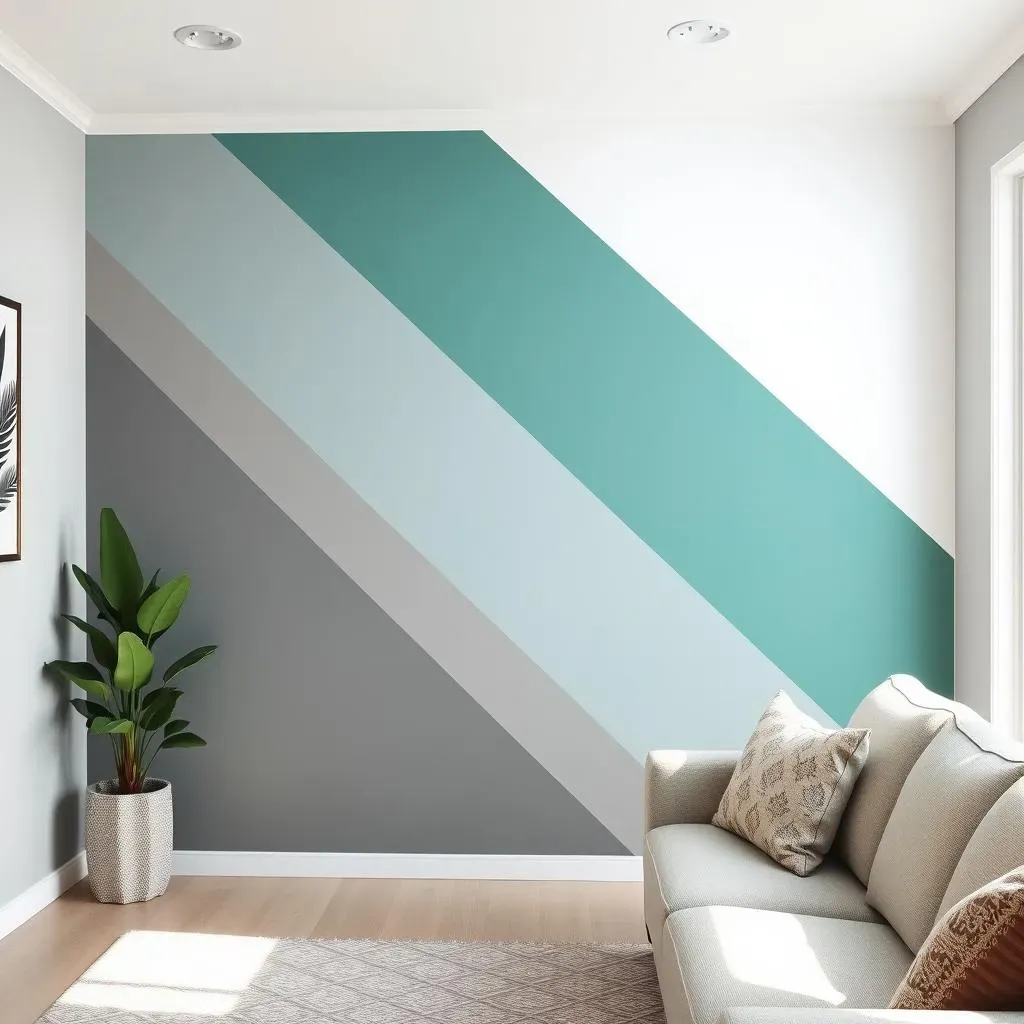Table of Contents
Bored with your blah walls? Yearning for a pop of personality without a full-blown reno? You've landed in the right spot! We're diving headfirst into the world of easy accent wall paint ideas that'll transform your space from drab to fab in a weekend. Forget complicated techniques and expensive materials – we're talking simple, achievable projects that anyone can tackle. Whether you're a seasoned DIYer or a complete newbie, this guide will walk you through a spectrum of creative options. From bold color blocking that makes a statement to surprisingly simple geometric designs, we'll show you how to use paint to create depth, texture, and visual interest. We'll even explore faux wallpaper effects that mimic the look of high-end designs without the hassle (or the price tag!). Ready to ditch the boring beige and unleash your inner artist? Stick around, because we're about to uncover a treasure trove of easy accent wall paint ideas that will have your friends saying, "Wow, did you hire a decorator?" Let's get painting!
Simple Color Blocking: Easy Accent Wall Paint Ideas
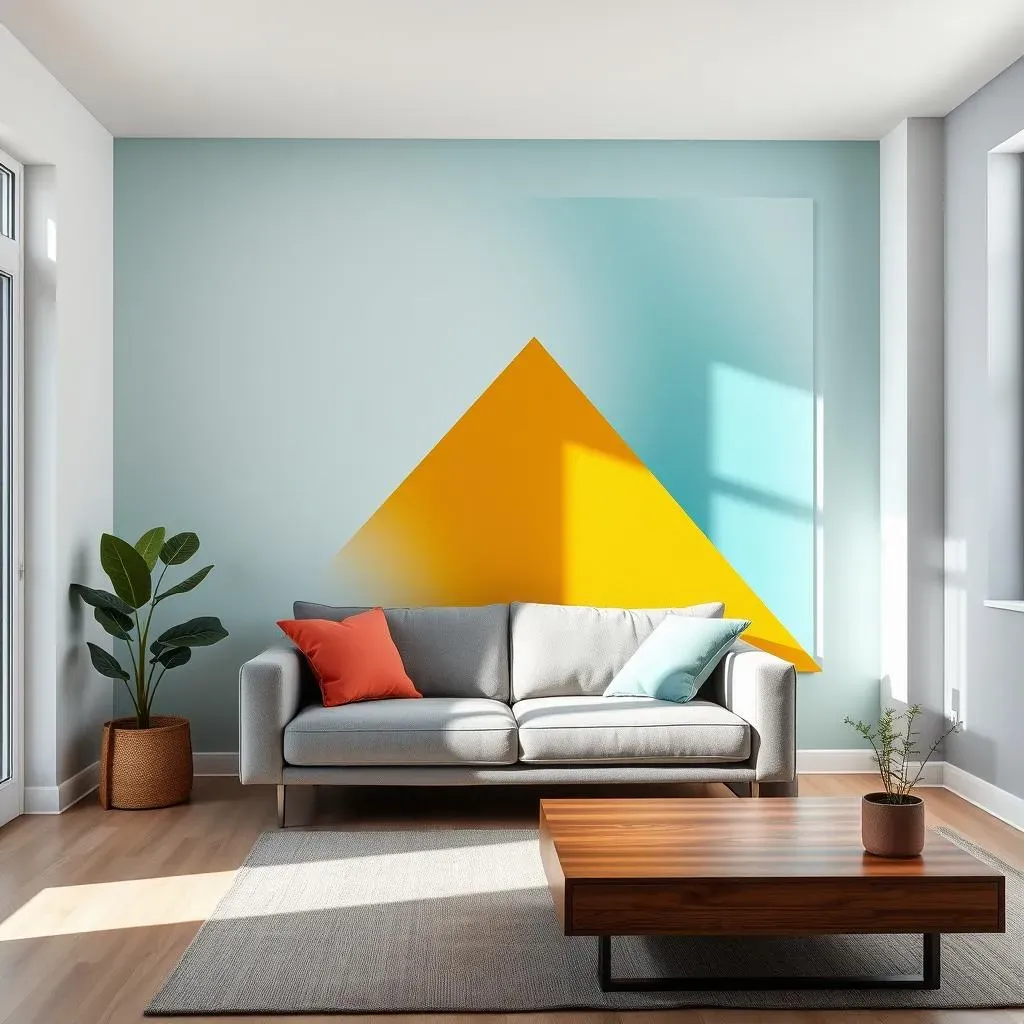
Simple Color Blocking: Easy Accent Wall Paint Ideas
let's kick things off with simple color blocking: easy accent wall paint ideas. This is seriously the gateway drug to accent walls because it's so straightforward and impactful. Think Mondrian meets your living room. The beauty of color blocking is that it's incredibly forgiving – no need to be a perfect painter here. We're talking bold shapes, clean lines (or not!), and a chance to play with color combinations you might not normally consider. It's like adult finger painting, but way more stylish. You can choose to go minimalist with just two colors and a simple horizontal line, or get wild with multiple hues and geometric shapes. The choice is yours!
Geometric Designs: Easy Accent Wall Painting Techniques
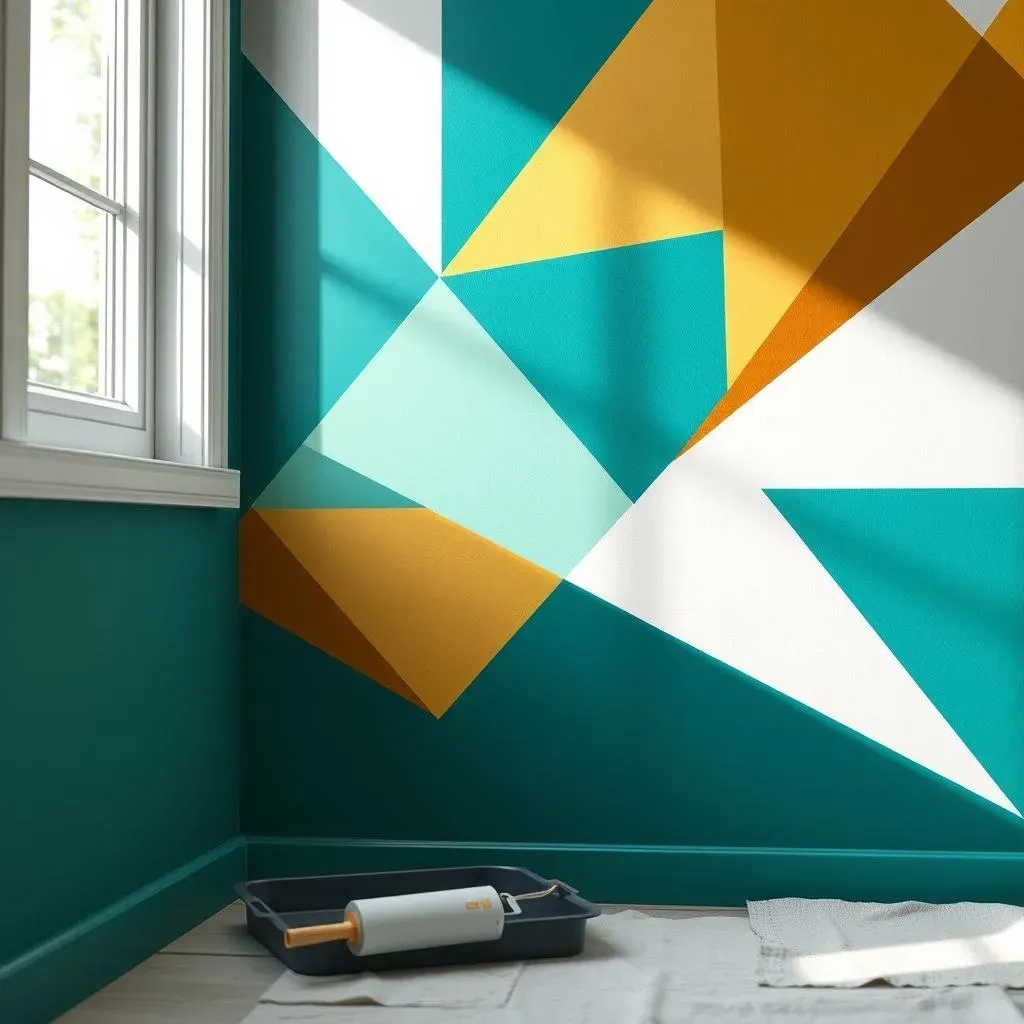
Geometric Designs: Easy Accent Wall Painting Techniques
Tape is Your Best Friend
Alright, so you're feeling a little more adventurous, huh? Let's talk geometric designs. These might look intimidating, but trust me, with a roll of painter's tape and a little patience, you can create some seriously impressive effects. Think chevrons, triangles, even a whole cityscape – the possibilities are endless. The key here is planning. Sketch out your design beforehand, measure carefully, and for the love of all that is holy, use good quality painter's tape! That's your secret weapon against bleeds and wonky lines.
Start with a base coat of your desired background color. Once that's completely dry (and I mean *completely*), grab your tape and start mapping out your design. Press the edges of the tape down firmly to get a good seal. Then, grab your accent color and get to painting! Remember to do thin coats to avoid drips and bleeds. Once the paint is dry to the touch, carefully peel off the tape at a 45-degree angle. And boom! Geometric awesomeness.
Level Up Your Geometric Game
Want to take your geometric game to the next level? Try incorporating multiple colors or playing with different textures. For example, you could create a triangle pattern using shades of the same color for a subtle ombré effect. Or, you could use a textured paint to add some dimension to your design. Another cool trick is to use metallic paint for a touch of glam. Imagine a navy blue wall with gold geometric accents – stunning, right?
Don't be afraid to experiment with different tape widths and angles. Skinny tape can create delicate pinstripes, while wider tape can create bold, graphic shapes. You can also use stencils to create more intricate geometric patterns. The possibilities are truly endless!
Essential Tools and Tips for Geometric Walls
Before you dive in, let's make sure you're armed with the right tools and knowledge. Here's a quick rundown:
- Painter's Tape: Invest in good quality tape to avoid paint bleed. FrogTape is a popular choice.
- Measuring Tools: A ruler, level, and measuring tape are essential for accurate lines.
- Paint Brushes/Rollers: Choose the right tools for your paint type and desired finish.
- Paint Trays: Keep your paint organized and prevent messes.
- Drop Cloths: Protect your floors and furniture from spills.
Pro Tip: Before you start painting, test your paint colors on a piece of cardboard to make sure you like the combination. And always, always let your base coat dry completely before applying tape. Patience is key to a flawless geometric design!
DIY Faux Wallpaper: Easy Accent Wall Paint Effects
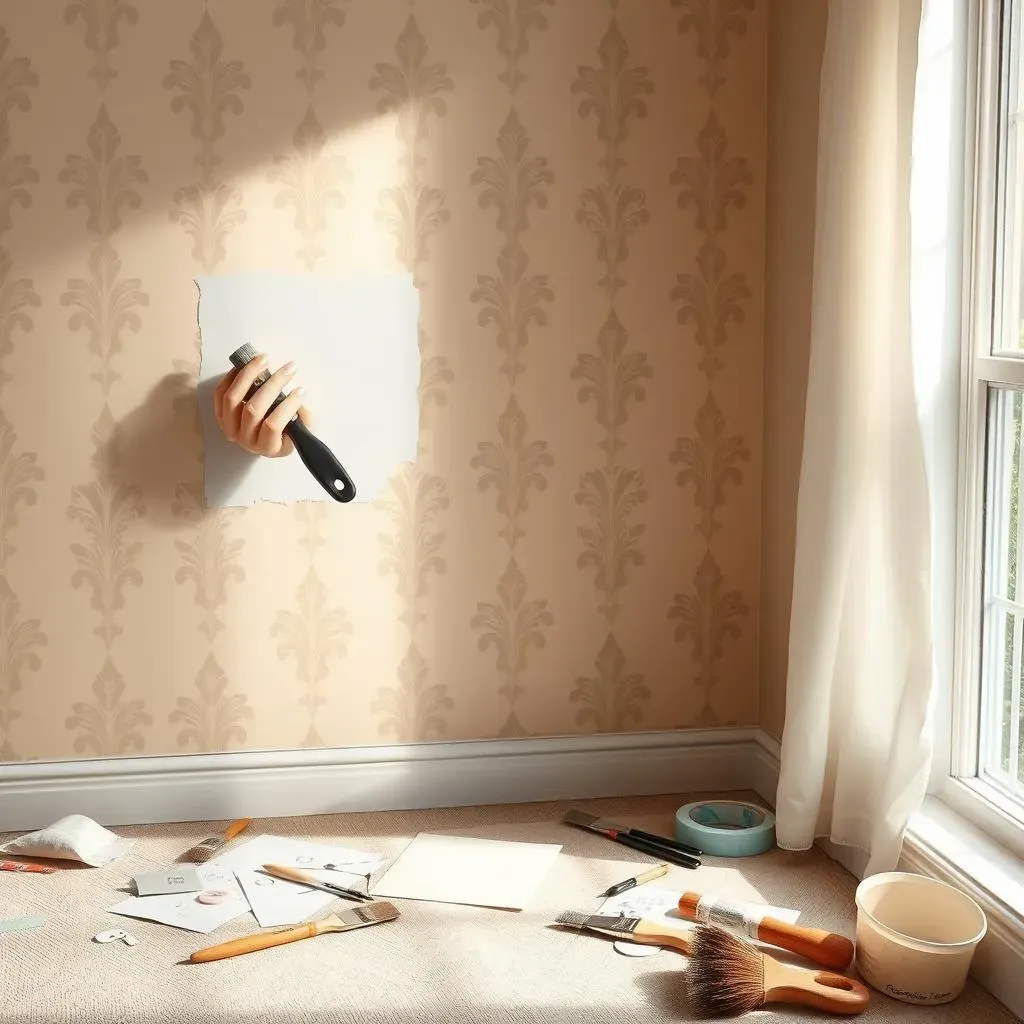
DIY Faux Wallpaper: Easy Accent Wall Paint Effects
Stencils to the Rescue
so you love the look of wallpaper but hate the commitment (and the price tag)? Enter the world of faux wallpaper! This is where stencils become your new best friend. You can find stencils in pretty much any pattern imaginable – damask, floral, geometric, you name it. And the best part? You can customize the colors to perfectly match your décor.
To get started, paint your wall with a base coat in your desired color. Once it's dry, position your stencil and secure it with painter's tape. Then, using a stencil brush or a foam roller, apply your paint in thin, even layers. Be careful not to overload your brush, as this can cause the paint to bleed under the stencil. Once you've covered the entire stencil, carefully lift it up and reposition it for the next section. Repeat until you've covered the entire wall. Voila! Instant wallpaper magic.
Rag Rolling and Sponging Techniques
If stencils aren't your thing, don't worry – there are plenty of other ways to create a faux wallpaper effect with paint. Rag rolling and sponging are two classic techniques that are surprisingly easy to master. For rag rolling, simply dip a lint-free rag into your paint, wring out the excess, and then roll the rag across the wall in random patterns. This will create a soft, textured effect that resembles the look of fabric wallpaper. For sponging, use a natural sea sponge to dab paint onto the wall, creating a more mottled and organic look.
The key to both of these techniques is to use a light touch and to blend the edges of each section as you go. You can also experiment with different colors and glazes to create even more depth and dimension. For example, you could use a metallic glaze over a base coat of matte paint to create a subtle shimmer effect. Or, you could use two different shades of the same color to create a more tonal and layered look. The possibilities are endless!
Technique | Tools Needed | Difficulty | Best For |
|---|---|---|---|
Stenciling | Stencils, stencil brush/roller, painter's tape | Medium | Precise patterns, repeating designs |
Rag Rolling | Lint-free rags, paint | Easy | Textured, fabric-like effect |
Sponging | Natural sea sponge, paint | Easy | Mottled, organic look |
Textured Accent Walls: Easy Paint Ideas for Dimension
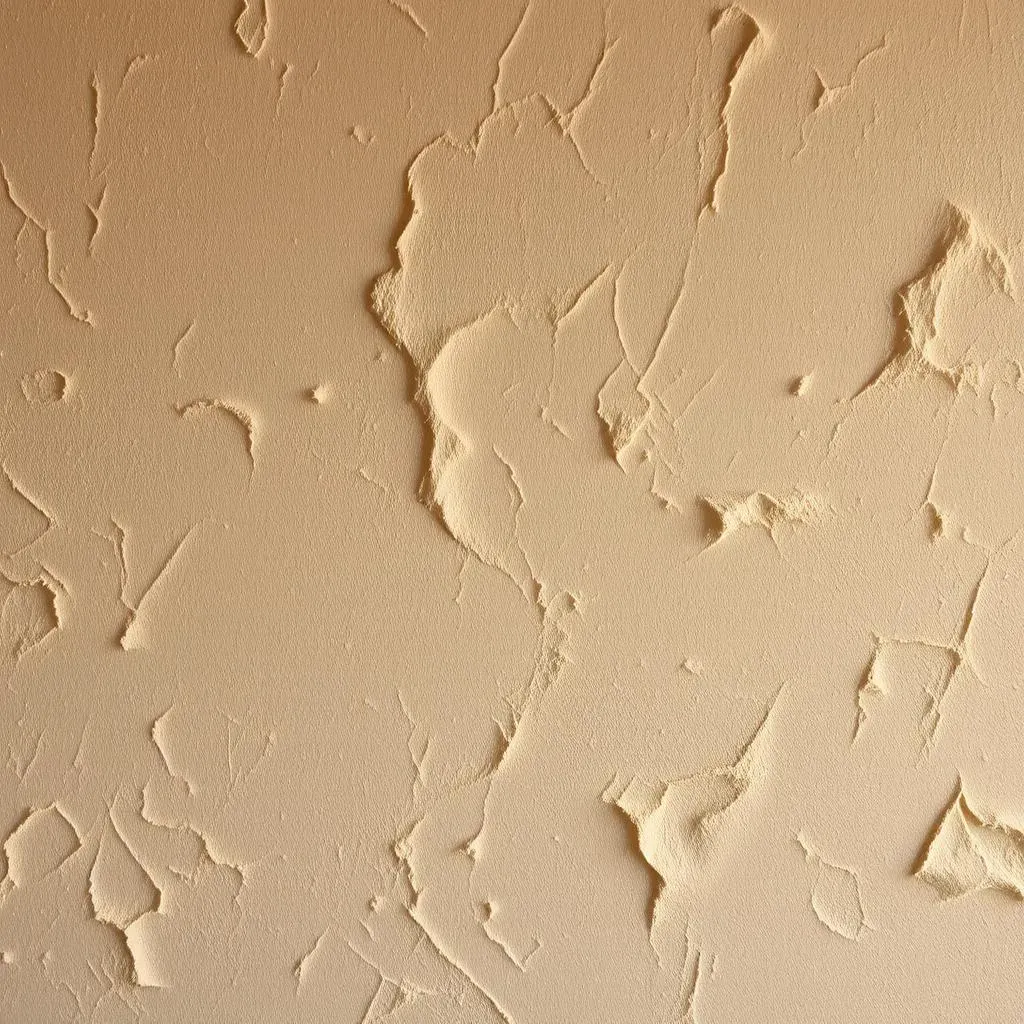
Textured Accent Walls: Easy Paint Ideas for Dimension
now let's get touchy-feely! Forget flat, boring walls – we're about to add some serious dimension with textured accent walls: easy paint ideas for dimension. This is where things get interesting because you're not just dealing with color, you're playing with depth and tactile sensations. Think about it: a subtly textured wall can add warmth, sophistication, and a whole lot of visual interest to a room. And the best part? You don't need to be a plastering pro to achieve these looks. We're talking about simple techniques that anyone can master, using readily available materials. Let's dive in!
Adding Texture with Joint Compound
One of the easiest and most versatile ways to create a textured accent wall is with joint compound (also known as drywall mud). This stuff is cheap, easy to work with, and can be used to create a variety of different textures. For a subtle, organic look, try applying the joint compound with a wide putty knife in random, swirling motions. You can also use a textured roller to create a more uniform pattern.
Want something a little more dramatic? Try using a stencil to create raised patterns with the joint compound. Simply apply the compound over the stencil with a putty knife, then carefully lift the stencil to reveal the design. You can also create a faux Venetian plaster effect by applying multiple thin layers of joint compound, then sanding them down to reveal subtle variations in color and texture.
Paintable Wallpaper: The Cheat Code for Texture
If you're not feeling confident about working with joint compound, there's a super easy cheat code: paintable wallpaper! This stuff comes in a variety of textures and patterns, from subtle grasscloth to bold geometric designs. Simply apply it to your wall like regular wallpaper, then paint it with your desired color.
The beauty of paintable wallpaper is that it gives you instant texture without any of the mess or hassle of other techniques. It's also a great option for covering up imperfections in your walls. Plus, if you ever get tired of the color, you can simply paint it again!
- Pros: Easy to install, covers imperfections, paintable, variety of textures
- Cons: Can be more expensive than other techniques, requires wallpaper adhesive
More Textured Paint Ideas
Beyond joint compound and paintable wallpaper, there are tons of other ways to add texture to your accent wall with paint. Here are a few ideas to get you started:
- Sand Paint: Add sand to your paint for a gritty, textured finish. This is a great option for creating a rustic or beachy look.
- Fabric Effects: Use cheesecloth or burlap to create interesting textures on your wall. Simply dip the fabric in paint and press it onto the wall.
- Metallic Glazes: Apply a metallic glaze over a textured base coat to create a shimmering, dimensional effect.
Remember, the key to a successful textured accent wall is to experiment and have fun! Don't be afraid to try different techniques and materials until you find something that you love. And most importantly, don't be afraid to get your hands dirty!
Creative Painting: More Easy Accent Wall Ideas
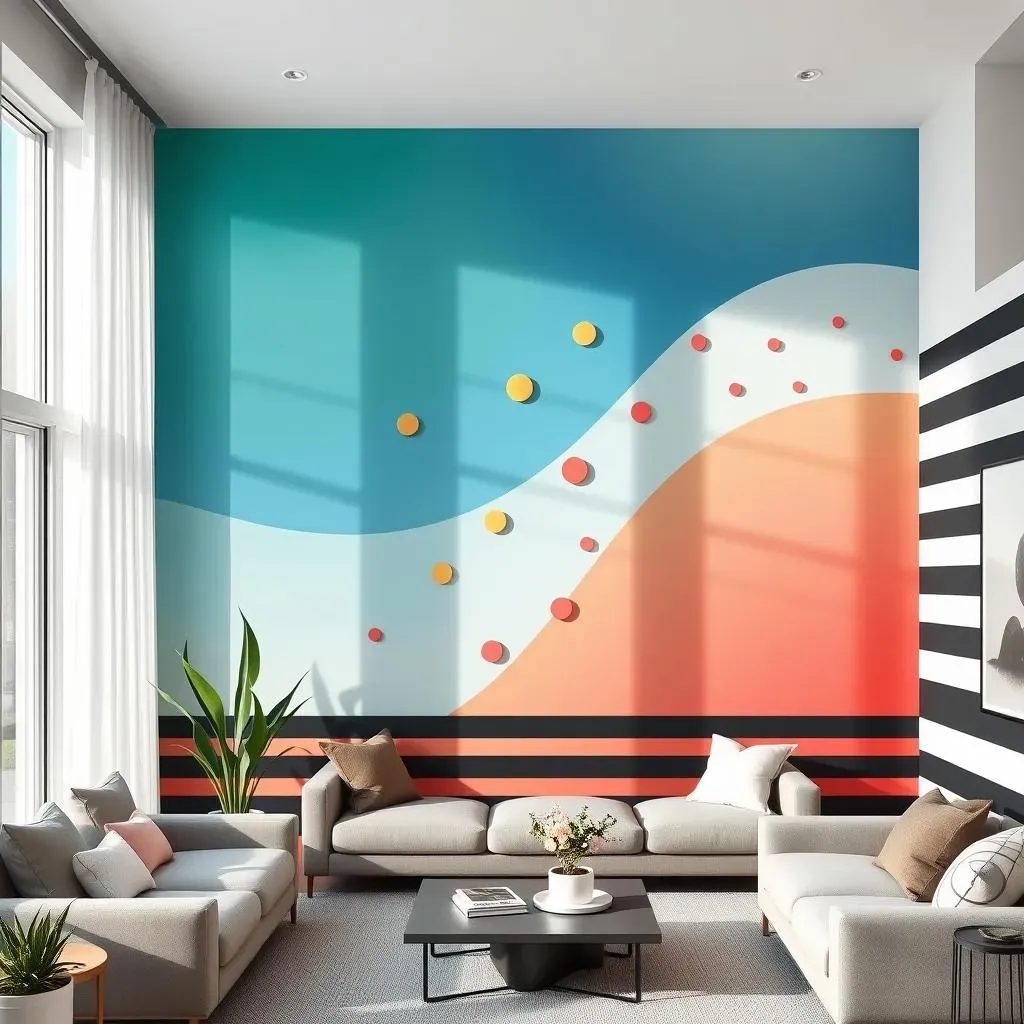
Creative Painting: More Easy Accent Wall Ideas
Alright, buckle up, because we're about to get seriously creative! We've covered color blocking, geometric designs, faux wallpaper, and textured walls. Now, let's unleash your inner Picasso with some truly unique and unexpected creative painting: more easy accent wall ideas. Forget the rules, forget the trends – this is about expressing your personality and creating a space that's 100% you. Think beyond the ordinary and embrace the weird, the wonderful, and the downright wacky! We're talking about turning your wall into a canvas for your imagination. Are you ready to get inspired?
Ombre Effect: Gradient Goodness
The Ombre Effect is one of the easiest ways to create a subtle yet eye-catching accent wall. All you need are a few shades of the same color and a little bit of patience. Start by painting the top of the wall with the lightest shade, then gradually blend in the darker shades as you move down. You can use a brush, a roller, or even a sponge to create the gradient effect. The key is to blend the colors seamlessly so that there are no harsh lines. This technique works especially well in bedrooms or nurseries, where you want to create a calm and relaxing atmosphere.
To make the ombre effect even more interesting, try using different finishes for each shade. For example, you could use a matte finish for the lightest shade and a satin finish for the darkest shade. This will add depth and dimension to the wall and make it even more visually appealing. You can also experiment with different color combinations. For example, you could use shades of blue and green for a cool and calming effect, or shades of red and orange for a warm and inviting effect.
Polka Dot Fun: Playful and Whimsical
Polka dots are a classic pattern that can add a touch of fun and whimsy to any room. And the best part? They're super easy to create! All you need are some stencils or circle-shaped sponges and a few different colors of paint. Simply dip the stencil or sponge into the paint and press it onto the wall. Repeat until you've covered the entire wall with polka dots. You can use different sizes of polka dots for a more dynamic look. This technique works especially well in kids' rooms or playrooms, where you want to create a playful and energetic atmosphere.
For a more sophisticated take on polka dots, try using metallic paint. Gold or silver polka dots on a dark background can create a glamorous and elegant effect. You can also use different colors of polka dots to create a more colorful and vibrant look. Just be sure to choose colors that complement each other and the rest of your décor.
Stripes: Classic and Versatile
Stripes are a timeless pattern that can add a touch of sophistication and style to any room. They're also incredibly versatile – you can use them to make a room look taller, wider, or more spacious. To create stripes on your accent wall, start by measuring and marking the lines with painter's tape. Then, paint the stripes with your desired colors. Be sure to use a level to ensure that the lines are straight. Once the paint is dry, carefully peel off the tape. This technique works especially well in living rooms or dining rooms, where you want to create a classic and elegant atmosphere.
For a more modern take on stripes, try using different widths. For example, you could use wide stripes for a bold and graphic look, or narrow stripes for a more subtle and refined look. You can also experiment with different color combinations. For example, you could use black and white stripes for a classic and timeless look, or bright and bold stripes for a more modern and playful look.
Technique | Description | Best For |
|---|---|---|
Ombre Effect | Gradient of colors from light to dark | Bedrooms, nurseries |
Polka Dots | Playful and whimsical dots | Kids' rooms, playrooms |
Stripes | Classic and versatile lines | Living rooms, dining rooms |
Conclusion: Your Walls, Your Canvas, Your Style
So, there you have it – a whirlwind tour of easy accent wall paint ideas to ignite your creativity. Remember, the best part about these projects is that they're entirely customizable. Don't be afraid to experiment with colors, patterns, and textures to create a space that truly reflects your personality. Whether you opt for a bold geometric statement, a subtle faux wallpaper effect, or a textured masterpiece, an accent wall is a fantastic way to add character and visual interest to any room. Now, grab a brush, unleash your inner artist, and transform those walls into a reflection of your unique style!
